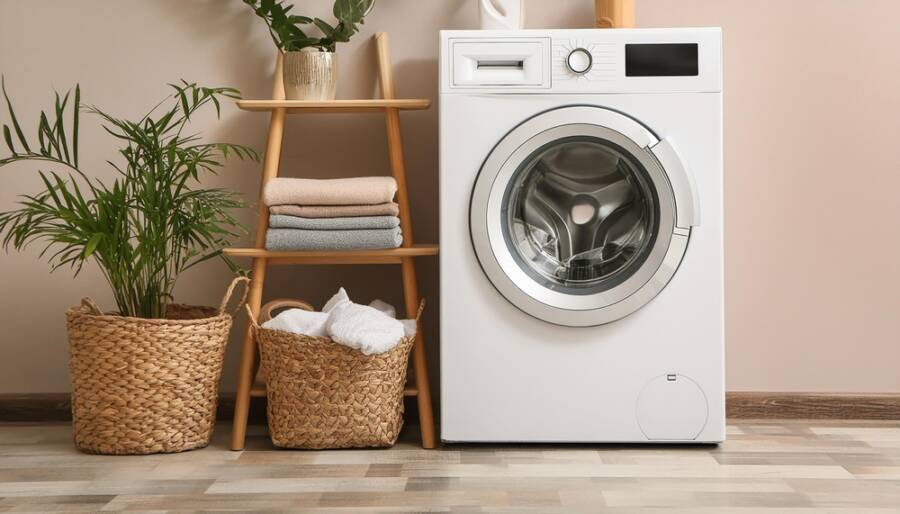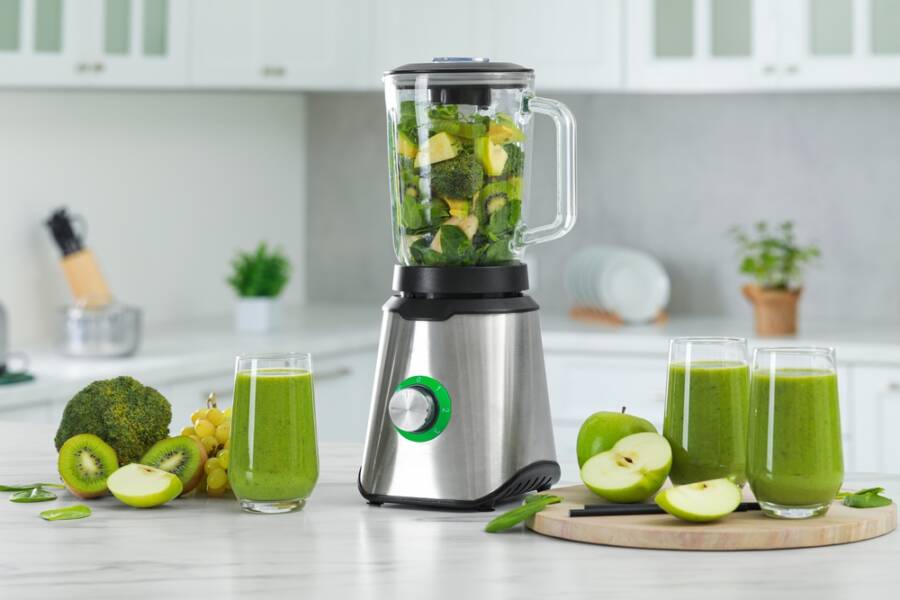Appliances that consume lots of energy become dangerous fire hazards you should NEVER plug into a power strip.
In today’s world, power strips have become a staple in many offices and homes. They provide convenience by allowing multiple electronic devices to be plugged into a single outlet. Yet, it’s essential to remember that not all appliances are meant to be connected to a power strip.
Those that use high wattage, including space heaters, air conditioners, and toasters, can cause power strips to overheat, creating a power strip safety hazard.
You should also never use a power strip meant for the indoors where there’s a chance of it getting wet, such as in laundry rooms or kitchens.
Wherever you’re using a power strip, make sure you pay attention to its maximum wattage, which you can find on the device’s label, and ensure the devices you plug into it don’t exceed that amount.
On that note, here are 7 dangerous fire hazards you should NEVER plug into a power strip!

Space Heaters
A space heater is a cozy little gadget that can warm up a freezing room in no time. But don’t forget that it’s also a high-demand device, not just regarding warming us up but also regarding all that electricity it eats up.
Most portable heaters consume about 1,500 watts of power when set on high. That’s a lot of energy! But on top of that, if you connect your space heater to a power strip, you’re headed straight towards trouble.
Regardless of the safety features that are usually built-in, they’re not entirely unfailing. They automatically turn off when overheated, but pushing your luck with the wrong power source can be an unnecessary power strip safety hazard.
Extension cords and regular power strips aren’t built to handle the high electrical current pulled by a space heater.
If we were to consider the substantial current required to switch these things on, it’s no wonder it’s considered a dangerous thing you should NEVER plug into a power strip!
Slow Cooker
Despite what you may think, slow cookers are power strip safety hazards. They’re not just zapping energy for a brief minute. So this is an appliance you should NEVER plug into a power strip. They maintain their power draw for quite a few hours.
So even though it might seem like these handy kitchen gadgets are lifesavers, they’re steadily drinking electricity for an extended period. It’s counterintuitive, we agree. You’d obviously think that slow cookers are low-amperage machines.
Yet, it’s not just about power but also about the duration. A power strip can’t guarantee continuous energy over long periods, which is pretty much a must for the safe function of a slow cooker.
So, to ensure your home’s safety, don’t take shortcuts by plugging your slow cooker into a power strip to save on outlet space. That power strip can’t take the long-term power requirements of slow cookers. It’s essential to always plug your slow cooker directly into a wall outlet.
Portable A/C
Just like with space heaters, portable air conditioners can pose a significant threat and they’re something you should NEVER plug into a power strip. Air conditioners are designed to cycle on and off, and they require a huge amount of current when they’re switched back on.
This change can damage a power strip, leading to a tripped circuit breaker or overheating. But there’s a bit more to it than that.
When handling appliances that have a high demand for current, particularly during their startup process, you’re basically inviting trouble if using a power strip. What’s even more disturbing is that this can lead to more severe consequences, including house fires.
So what’s the solution? Well, it’s pretty straightforward. Just plug your portable air conditioners into their own dedicated wall outlets. Doing this will ensure the safety of your home, and you’ll avoid any potential power strip safety hazards.

Washing Machine
A washing machine humming away, blissfully plugged into a power strip, isn’t an exceptionally safe sight. The average washing machine consumes up to 1400 watts of power, which pushes power strips to their absolute limits.
With lengthy usage cycles, these machines have the odd ability to overheat power strips. And don’t forget that we generally leave washing machines unattended for long periods.
So, that sums up to an hour or so of the potential power strip safety hazard posed by you plugging your washing machine into a strip.
Next time when laundry day rolls around, try to resist the urge to plug your washing machine into a power strip. Reserve the designated wall outlet meant for this task.
Coffee Maker
It’s time to reveal one of the most common appliances you should NEVER plug into a power strip: Your coffee maker! Making your morning cup of sunshine might seem like it’s no big deal, but sorry folks, it is!
Most coffee makers require substantial amperage to turn those delicious roasted beans into a hot beverage. It’s an energy load that your power strip may have a hard time handling.
In other words, plug your coffee maker into a power strip, and you could begin your day with a power-tripping experience or a half-brewed pot of coffee. So let’s just make life simple and safe.
Always give your coffee maker its own dedicated wall outlet. It will guarantee that no electrical overload occurs and will keep your daily coffee ritual uninterrupted, avoiding any power strip safety hazards.
Freezer/Refrigerator
Your refrigerator and freezer, as incredible as they are at keeping your food chilly, are something you should NEVER plug into a power strip. The reason is that these machines are like all the other energy-consuming beasts in your kitchen: Power strip safety hazards!
They constantly cycle on and off, requiring more power than a power strip can provide. You’re meant to plug these appliances directly into their dedicated wall outlets to prevent them from getting overloaded.
Besides, it obviously makes sense to let them keep their cool without interruptions. And if you have limited outlets in your kitchen, you should consider having an electrician install a couple more. It’s for the safety of your appliances and, most significantly, for you!

Blenders
You Magic Bullet may seem like a harmless kitchen tool, but in actuality, it’s a wattage wizard! Safety is key, so it’s vital to permanently plug a blender directly into a kitchen GFCI outlet.
This will ensure your blender gets all the power it requires and keeps you from risking a possible short circuit. Blenders deal with liquids, and the last thing you want is to spill some of that smoothie on your power strip.
Now, that’s a true blender blunder! Keep in mind that just because an appliance is small doesn’t mean it’s suitable for a power strip.
The size of an appliance doesn’t define if it’s safe to plug it into a power strip. It all comes down to the power a device demands, and blenders require quite a lot with their powerful motors. So, again, this is a device you should NEVER plug into a power strip.
Are you familiar with the items you should NEVER plug into a power strip? What other items do you believe are power strip safety hazards? Let us know in the comments if you think we missed any.
And in the meantime, The Home Team has many more fantastic articles for you to read. For example, we highly recommend you check out: 14 Home Maintenance Mistakes That Are Damaging Your Home








